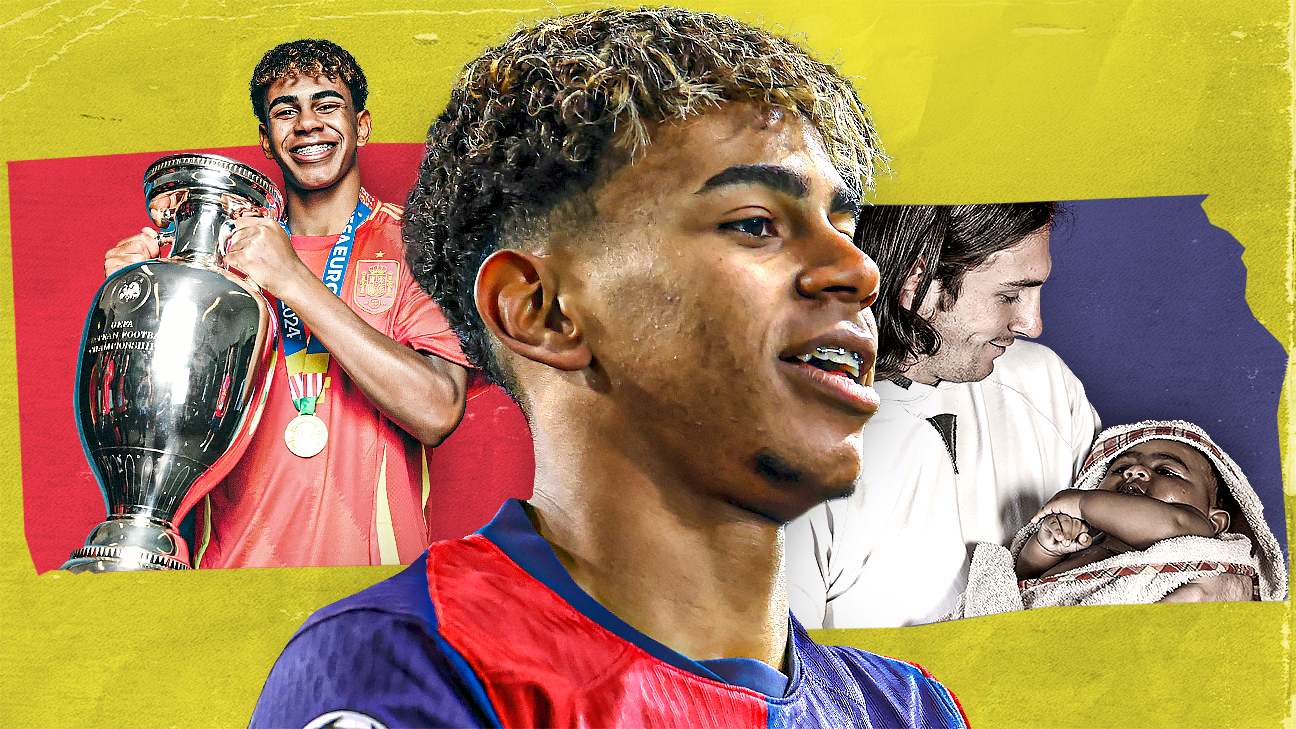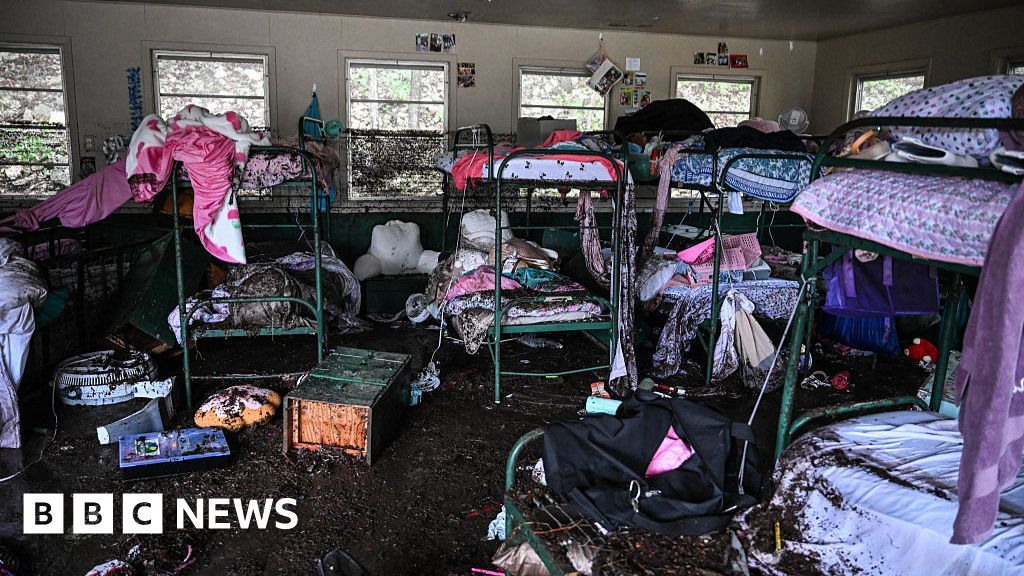
Tim VickeryJul 11, 2025, 04:57 PM
The FIFA Club World Cup was a success in Brazil, and a success for Brazil.
Right from the start, the traveling mass of Brazilian supporters created an atmosphere that forced some critics to concede that the tournament was much more than a preseason kickabout. As the country's four representatives (Palmeiras, Flamengo, Fluminense and Botafogo) made progress, back home the competition was a main topic of conversation at every bus stop and supermarket line.
At times, it almost felt like a World Cup where the national team was taking the field four times in three days. There is a significant difference, though: Almost all the players of the national team make their living in Europe, some of whom are remote figures, little known to the Brazilian public. In contrast, this competition gave a chance to shine on the global stage to the players who are in action week in, week out in the domestic game.
Brazil places enormous importance on the FIFA Intercontinental Cup, a tournament that pits each continental club champion against one another. That competition has become an annual embarrassment, with the best Brazilian sides no match for the Europeans and occasionally humbled by teams from other continents. But it takes place at the end of the grueling South American season, when players are far from peak condition.
The Club World Cup would be different. This time it was all in their favor. They were in mid-season, the fans made it feel like they were playing at home, and, especially in the cases of Flamengo and Palmeiras, like Olympic athletes, they had planned and prepared to hit their peak at this very moment.
This, then, was a huge opportunity.
For some, it ended up being a disappointment. Botafogo sacked their coach just a few days after their epic win over finalists Paris Saint-Germain. At the same time, an internal crisis at Flamengo and some head scratching at Palmeiras happened following their early exits as they watched unfancied Fluminense make it to the semifinals.
From the outside, however, the balance has to be positive. Brazilian football took advantage of the opportunity to show beyond all doubt that its teams can compete at this level. It is highly symbolic that Fluminense were eliminated by one of their own youth products: João Pedro, who scored both goals for Chelsea as they eliminated the club from Rio de Janeiro.
The financial chasm with top-level European football is undeniable. To put it into perspective, Uruguayan forward Agustín Canobbio was the most expensive member of this Fluminense squad that played at the Club World Cup, when he arrived for €6 million from recently relegated Athletico Paranaense at the beginning of the year; Flu received an €11.5 million transfer fee from Watford for João Pedro in 2020, and he's generated nearly €100 million in transfer fees since.
For the foreseeable future, Brazil will continue to lose its stars. The latest local wonderkid, Estêvão, the most promising player to come out of Brazil since Neymar, gave Chelsea a show of his talent before completing his transfer to London from Palmeiras. Igor Jesus, Botafogo's excellent center forward, has joined Nottingham Forest. Gerson, Flamengo's attacking midfield powerhouse, moved on to Zenit St. Petersburg. The exodus will not stop.
Yet Brazilian football has come up with a strategy to deal with the situation. First, clubs use the money from these transfers to get players back from Europe, either as veterans nearing the end of their careers (witness Thiago Silva's triumphant return to Fluminense) or good players who have not lived up to expectations. Second, Brazil now treats the rest of South America in the same way that it is treated by Europe, trawling the continent for talent: as a result, some of the most important players (Flamengo's Giorgian de Arrascaeta is from Uruguay, for example) are foreigners.
No one played better for any of the Brazilian teams than Jhon Arias, the diminuative Colombian attacking midfielder. Altogether, 30 players from seven other South American nations (all except Bolivia and Peru) turned out for Brazilian clubs during the competition.
One of the most interesting is Álvaro Montoro, an 18-year-old Argentine recently picked up by Botafogo from Velez Sarsfield. His appearances off the bench in this tournament hinted at real quality. This trend will surely continue as Palmeiras have just announced the signing of Ramón Sosa, the Paraguay international winger, from Nottingham Forest.
Another trend that has strengthened the game in recent years is the influx of foreign coaches. While it's true that most successful Brazilian team in the competition, Fluminense, was coached by Renato Portaluppi, a local veteran, he and everyone else are being forced to up their game by the influx of names and new ideas, especially from Portugal and Argentina.
The turning point was the arrival of Portuguese coach Jorge Jesus in 2019. In the past few years, then, there has been more money coming in, more ideas, some good foreign transfers, and more stability than before. Jesus enjoyed a magical few months with Flamengo, leading an attacking quartet that locals had once dismissed as hopelessly naive for being too disorganized and offensively minded. With the European clubs focused on signing adolescents, clubs have been losing their brightest prospects, but not necessarily their best players.
When they won the Copa Libertadores in 2019, their midfield featured a blend of experience and prime-age talent. It had 30-year-old Éverton Ribeiro, 25-year-old De Arrascaeta, and 28-year-old Bruno Henrique, with 23-year-old Gabriel Barbosa -- then rebounding from a disappointing spell in Europe -- leading the line.
Flamengo were able to keep that attacking quartet together for years and, remarkably, major European clubs have not come in for Fluminense's Arias. Put all of these factors together and as the last few weeks have shown, Brazil can compete.
But could it compete better?
There is certainly massive room for improvement in the domestic game. The clubs still do not run their own league, and so they are caught up in an absurd calendar that imposes far too many matches on them. The issue was highlighted when Chelsea head coach Enzo Maresca, speaking before their win over Fluminense, said that his team was at a disadvantage after playing 63 games this year, only to be corrected by a Brazilian journalist who pointed out that the Brazilian club had played 70 in the same period.
Many of the pitches are sub-standard, and a recent move towards synthetic surfaces is meeting pushback from experienced stars such as Lucas Moura, Thiago Silva and Neymar, who think the country deserves better.
Just as the clubs are too busy squabbling over TV revenue to get together and organize a championship, the game on the field can often be bitter and attritional. The meeting of Palmeiras and Botafogo in the round of 16 -- a 1-0 win for Palmeiras after extra time -- was one of the low points of the Club World Cup. But improve the spectacle, and with the talent on show, the number of big clubs in action, and the rich history of the game, there seems little doubt that the Brazilian league could be a worldwide attraction.
0:58
Botafogo stun Champions League holders PSG
Brazilian side Botafogo stunned everyone when they beat Champions League holders PSG 1-0 at the Club World Cup.
Perhaps the past few weeks have hinted at an alternative future, though one that might be dangerous for South American football as a whole.
Almost a decade ago, there were concerted attempts behind the scenes to bring about a Pan-American championship. They fell through, but the idea will surely return. Since then, Brazil clubs have taken a stranglehold on the Copa Libertadores. They have won the past six finals, with four of them even all-Brazilian affairs. This dominance, by any country, is unprecedented, and it is hard to see how it can be challenged. The disappointing displays of the Argentine giants Boca Juniors and River Plate at the Club World Cup -- both eliminated in the group stage -- merely reinforce a perception that Brazil is outgrowing South American club football and the country's clubs are starting to look north.
They will be looking all the harder after the matches between Botafogo and Seattle Sounders and Palmeiras against Inter Miami, contests that were attractive, unpredictable and potentially lucrative.
The logistical problems are immense, as the Americas are huge, but after the evidence of the past few weeks, thoughts will surely turn to ways of having more matches between clubs from both sides of the Rio Grande.
 (1).png)
 6 hours ago
2
6 hours ago
2

















